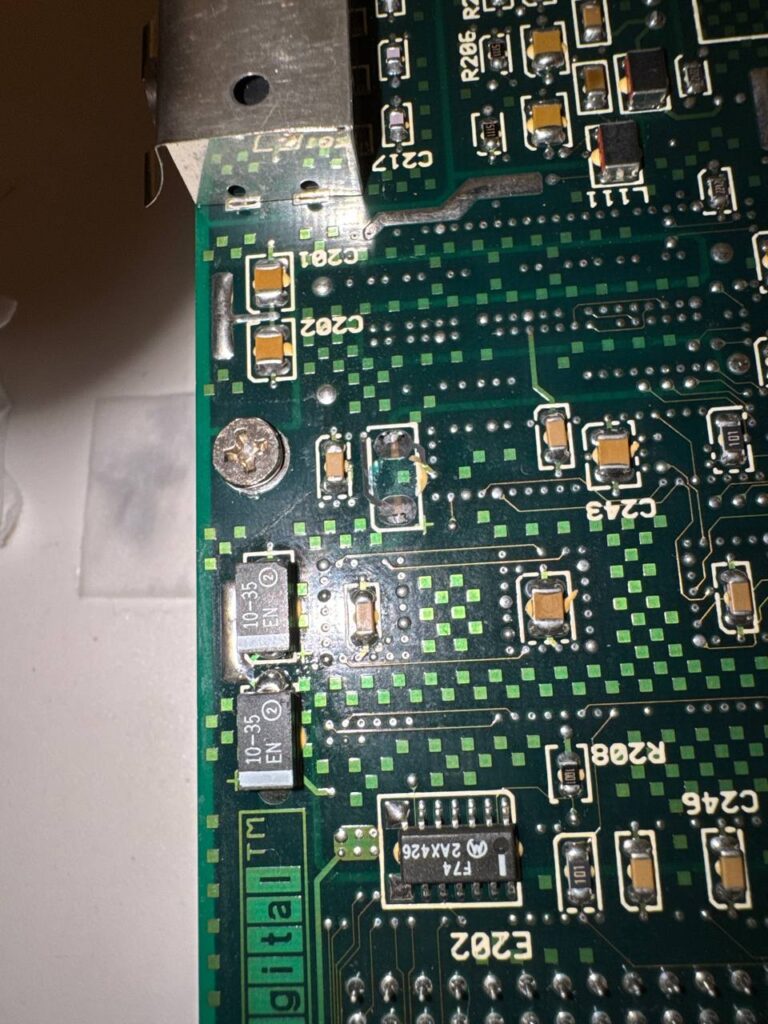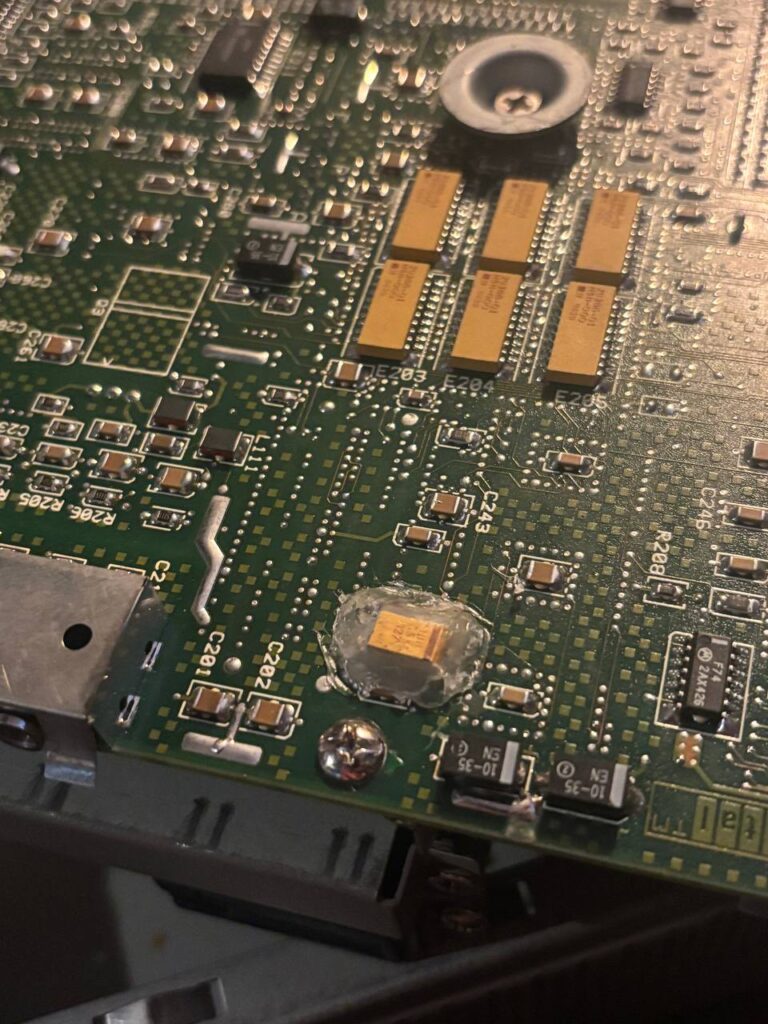I found the film interestingly transitional. While it’s surprising how modern Citizen Kane feels for a film of its time, Ambersons feels simultaneously likewise ahead of its time, yet also dated. There are many interesting and dynamic cinematography decisions (mirror shots, towering stairwell shots, the children fighting in the beginning. But the pacing is plodding and feels more remiscient of a film from the 1930’s. It feels like it’s from before Kane rather than after. Considering the amount that was cut, I’m skeptical of the claims of the intended cut being superior. That said, there’s a lot of confusing cuts and time advancements – perhaps more connective tissue between scenes would have made those smoother.
Continue readingAuthor: cb
Notes when disassembling Fujitsu Siemens Futro S200/S300 thin clients
The disassembly instructions found online (i.e. from here) only let you access the board. If you need to remove the board (i.e. inspect the rear or replace it), then there are some things to keep in mind:
- The D-sub nuts for serial/parallel/VGA hold the case together, as does the rear 3.5mm jack. The retention nut on it can be hard to remove.
- There are only three screws holding the board down on the corners.
- You likely don’t need to remove the heatsink except to replace thermal paste (which it uses despite using thermal pads everywhere else). It looks like it retains the board to the chassis, but it doesn’t; the standoffs the heatsink is screwed into just float and aren’t held to the chassis. I suspect it’s solely for avoiding PCB flex when screwing the heatsink on.
- If you unscrew both the heatsink and the board, the standoffs will fall out of place and float around in the chassis until you find them again. One thing at a time.
- Likely, you don’t need to remove the GPU heatsink (small black one). It doesn’t have any retention involved.
- You may not need to remove the PCI bracket, but you might find removing it helps.
- You don’t need to remove the PSU; the board lifts around it. Obviously, unplug the power connector.
- There’s an “EMI gasket” between the ethernet port and the chassis. Remove it temporarily; it can be reinstalled.
- There is electrical tape on the front and rear USB ports. Remove these and don’t bother reinstalling them.
- The board tilts upward from the front ports, then out. Friction is what keeps the board in mostly after removing the screws.
What is it for?
One of the big changes for iPad announced in the latest WWDC is the introduction of conventional window management and a menu bar. While I suspect this is likely getting a lot of praise from the press and tech taste makers people who decried the iPad as a “toy”, it raises more questions about what the iPad is for than it answers.

Changing what commit a git submodule points to without initializing it
Let’s say you have a submodule that you want to change, but the submodule itself is huge. You might not want another copy of it, so you’re holding off on running git submodule update --init. Internally in your repo, Git records the commit that the submodule points to. If you have the exact commit ID, you can run this command to adjust it points to in the index (substituting the hash for the commit ID you want to change it to, and of course, the path to the submodule):
git update-index --add --cacheinfo 160000,4435a55c4c352d5c703cab322c208ca4dce14ae8,submodule_name_hereThis is added to the index, so you’ll have to commit your change as normal.
Capacitor sheared off on Multia systems
I have a Multia (VX40) that developed intermittent failure to POST, and had a very hot 3.3V rail. It seems this is because a capacitor on the system gets sheared off the board by a metal locating peg when the board is slid out of the chassis. (This doesn’t seem to be related to the common failure of the 74F623 bus transceiver on Multia systems.) Said capacitor is at the front of the system, by the screw near the audio ports. When it gets sheared off, it seems to also possibly damage the traces.

It seems this is a tantalum poly electrolytic, 106 at 35V for 10µf. I have not yet ordered a specific replacement; when I get around to replacing it, I’ll update this post. Per someone I know who replaced the part on theirs, they recommend holding down the component in place with glue and opening the top case when sliding the board out to avoid future damage.

Installing SQL Server 2022 on newer Ubuntu 24.04
I had a need to install SQL Server 2022 on Ubuntu 24.04. The instructions for Ubuntu 22.04 will work fine, until you start it. While it does install with the Ubuntu 22.04 packages, the dependencies are incorrectly marked*. When you try to set up the new SQL Server instance, it’ll make this error on startup:
Configuring SQL Server...
/opt/mssql/bin/sqlservr: error while loading shared libraries: liblber-2.4.so.2: cannot open shared object file: No such file or directoryProject idea: pkg-config support in compilers
I’ve got a lot of ideas in my head of things I’d like to see, but don’t have the time to see out myself. Perhaps this could be a series. However, unlike many “idea guys”, I’m aiming to explain how you could implement this. And please do – I’m sharing because I think it’d be beneficial, or at least interesting to think about.
Anyways, what I have wanted for a while is pkg-config support in compilers. Perhaps it could simplify smaller build systems for programs without needing to involve something like CMake. Or maybe it’s a bad idea, but we can at least learn along the way.
Continue readingCommon issues with using GnuPG over SSH from a Mac
Usually, I work directly on my Mac, but sometimes, I have to log into it from another system. By default (at least on MacPorts), the GnuPG agent will default to using the graphical pinentry. Normally, this is good, but if you need to enter your key passphrase, it’ll open on the desktop instead. Oops. To fix this part, add this line (adjusting path as needed) to ~/.gnupg/gpg-agent.conf (maybe need to restart the agent too):
pinentry-program /opt/local/bin/pinentry-cursesRemove this line to go back to using graphical passphrase entry.
Sometimes with this, you might get an error like this with the curses version of pinetry:
gpg: signing failed: Inappropriate ioctl for deviceIt seems GnuPG might not pick up the right TTY, so you may need to explicitly override it:
GPG_TTY=$(tty)
export GPG_TTYBrief thoughts on Dark Messiah of Might and Magic
I enjoy the immersive sim subgenre of video games, focused on player agency and interlocking systems. I’m also a fan of the games of Arkane, who have made many of those over the years. While Dishonored and Prey rightfully get a lot of love, I haven’t checked out their earlier titles. I decided to give one of their early games, Dark Messiah of Might and Magic a shot. Is it actually interesting? Let’s find out!
Continue readingMaking mailing lists nicer: Writing a mail extension for macOS with MailKit
As a developer, I need to work with mailing lists a lot. Developer-focused mailing lists tend to have certain conventions most usage of email has moved on from, as have the clients. While some people who trawl mailing lists configure some terminal email client, I tend to not like those. Most of the time, I use the stock Apple mail application (Mail.app). It otherwise works well and has platform integration.
However, I do want to avoid a lot of common mailing list faux pas, like top posting and not wrapping lines. Mail.app can write plain text emails, but it doesn’t push you in the right direction for mailing lists. However, Mail.app does provide an extension API. I figured I could write an extension to make my life on mailing lists easier. Turns out it’s possible!
The extension I wrote is called MailTools (tentative until a better name is found). Feel free to build or download it yourself; this article explains the challenges I faced.
Continue reading